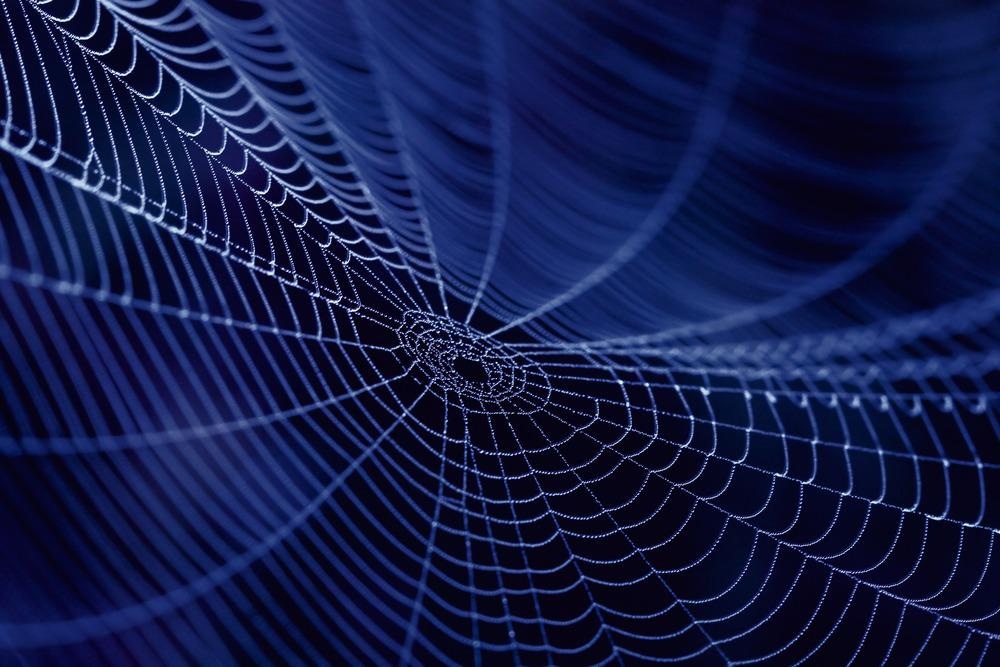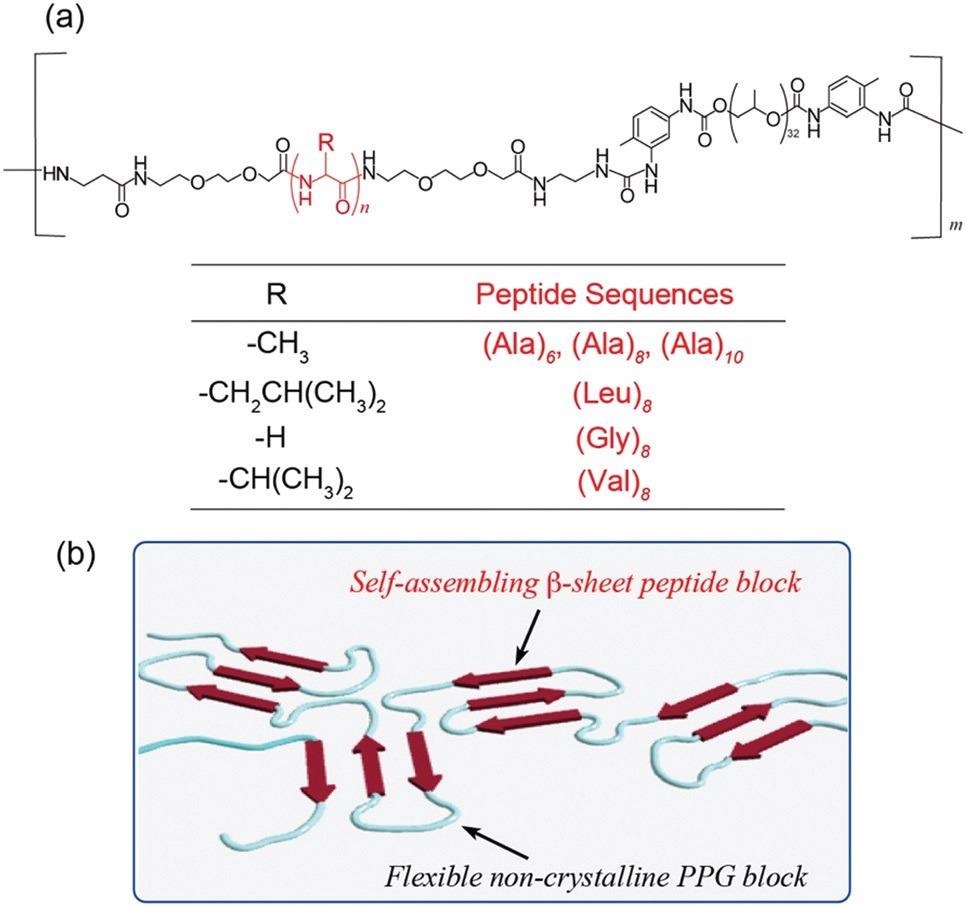Spider-webs are one of nature’s wonders; besides being remarkably intricate structures, they have been subjected to intense scientific study. This is due to the properties of the silk material spiders produce when spinning their webs.

Study: Spider Silk-Inspired Peptide Multiblock Hybrid Copolymers For Self-Healable Thin Film Materials. Image Credit: mycteria/Shutterstock.com
A team of researchers at the Department of Molecular Chemistry and Biochemistry, Faculty of Science and Engineering, Doshisha University, Kyotanabe, Kyoto, Japan have described the synthesis of a novel nano/microfilm material inspired by the major ampullate silk that the Golden Silk-Orb Weaver (Nephila clavipes) produces. The research was published in the Royal Society of Chemistry Journal, Materials Advances.
The material uses spider-silk-inspired peptide multiblock hybrid copolymers which in turn exhibit good mechanical strength and self-healing properties in the thin films. What is more, these characteristics can be modified by adjusting the length and sequence of the peptide blocks.

(a) Chemical structure of multiblock hybrid copolymers composed of self-assembling peptides and flexible polypropylene glycol. (b) Schematic illustration of the self-assembling model at the film state. Image Credit: Tomoyuki Koga et al., Materials Advances
Interestingly, the silk material that spiders produce varies according to the task which they need to perform. For example, dragline silk (produced in the major ampullate silk gland) is typically used as a scaffold and it serves its purpose because it is extremely strong and tough, while demonstrating moderate elasticity.
Comparatively, the silk fiber used for the capturing spiral of orb webs (produced via the flagelliform gland) is highly elastic and dissipates the energy impact of prey that come into contact with the web.
Professor Nobuyuki Higashi, co-author, and lead of the study states, “From a structural perspective, the self-assembled structure of spider silks can be regarded as nanoscale networks composed of crystalline and non-crystalline regions.”
This unique composition of spider silk is what facilitates the adjustment of the material’s mechanical properties for the appropriate task.
“Natural biopolymers exhibit smart functions and extraordinary physical properties because of their optimized and rational molecular structures. Understanding and mimicking such architectural principles on a nanoscale offer promising opportunities for designing novel functional polymer materials,” says Higashi.
Molecular biomimetics is an emerging field that utilizes the properties of molecular biology and nanotechnology, and as a result, has attracted much attention as a useful approach when designing innovative materials for use in nanotechnology and biomedical applications.
![Mechanical properties of [(peptide)n–PPG]m hybrid microfilms. (a and b) Representative stress–strain curves of various [(peptide)n–PPG]m films with different peptide sequences (a) and chain lengths (b). (c) Summary of tensile tests. Statistical analyses performed using Student’s t-test. *p < 0.01. (d) Comparison of breaking energy for [(peptide)n–PPG]m films. Error bars represent standard deviation.](https://d12oja0ew7x0i8.cloudfront.net/images/news/ImageForNews_57236_16363763120218155.jpg)
Mechanical properties of [(peptide)n–PPG]m hybrid microfilms. (a and b) Representative stress–strain curves of various [(peptide)n–PPG]m films with different peptide sequences (a) and chain lengths (b). (c) Summary of tensile tests. Statistical analyses were performed using Student’s t-test. *p < 0.01. (d) Comparison of breaking energy for [(peptide)n–PPG]m films. Error bars represent standard deviation. Image Credit: Tomoyuki Koga et al., Materials Advances
By understanding the way natural polymer materials work, in particular how proteins and peptides possess an intelligent function, good biocompatibility, and exceptional physical properties, researchers can develop novel new materials for a wide range of functions.
The Japanese team emphasizes the “great potential” of molecular biomimetics by using a peptide-polymer hybrid strategy for the development of novel thin films which could also facilitate a deeper understanding of the structure-property correlation in peptide-based materials.
Six types of hybrids with varying peptide chain lengths and sequences were synthesized successfully by employing a relatively straightforward solid-phase peptide synthesis and a subsequent polyaddition reaction.
For each hybrid, the researchers developed two distinct blocks, one that was flexible and elastic, the other hard and rigid. These served as cross-links for the network structure they produced.
“Based on the biomimetic design principle, we synthesized various spider silk-mimetic peptide–synthetic polymer multiblock hybrids composed of self-assembling hydrophobic oligopeptides (Ala, Gly, Val, and Leu-based peptides) and a non-crystalline and flexible PPG, i.e., [peptide–PPG]m, via step-growth polymerization,” Higashi stated.
The various properties were then evaluated via a series of tests including tensile tests for assessing the mechanical properties of the material, as well as deploying water CA and thermogravimetric analyses to test the surface wettability and thermal stability of various peptides.
The team was also able to assess that the self-healing properties of the thin films were evident as a result of the sheet forming ability of peptide multiblocks. The team applied a scratch test to the surface of the film and then observed self-healing via laser microscopy.
3![(a) Preparation of the self-supporting [(Ala)n–PPG]m nanofilm via spin coating using a sacrificial under layer. (b) Photographs of the [(Ala)n–PPG]m nanofilm in CHCl3 (top) and that grasped using tweezers (bottom). (c) Cross-sectional SEM and (d) AFM images of the [(Ala)8–PPG]m nanofilm obtained from 0.5 wt% solution. The inset in (d) shows the height profile at the edge of the nanofilm.](https://d12oja0ew7x0i8.cloudfront.net/images/news/ImageForNews_57236_16363763263087484.jpg)
(a) Preparation of the self-supporting [(Ala)n–PPG]m nanofilm via spin coating using a sacrificial under layer. (b) Photographs of the [(Ala)n–PPG]m nanofilm in CHCl3 (top) and that grasped using tweezers (bottom). (c) Cross-sectional SEM and (d) AFM images of the [(Ala)8–PPG]m nanofilm obtained from 0.5 wt% solution. The inset in (d) shows the height profile at the edge of the nanofilm. Image Credit: Tomoyuki Koga et al., Materials Advances
This was achieved “through both multiple/reversible hydrogen bonds among the self-assembling oligopeptide blocks and non-crystalline flexible PPG blocks,” said Higashi.
The team was successfully able to prove a strategy that would enable the creation and production of self-healing thin films that can be applied as thin-film coatings to nanostructured surfaces.
“We believe that this peptide–polymer hybrid strategy will enable the creation of structurally and functionally diverse multiblock polymers that will be beneficial to nanotechnology and biomedicine, as well as provide new directions for the design of smart self-assembling nanomaterials,” stated Tomoyuki Koga, co-author, and associate professor at Doshisha University.
Thus, the Japanese team has presented a real opportunity to advance an effective method for the synthesis of high-performance polymer films which could find application in tissue engineering, controlled drug delivery, catalysis, nano-templates, and bioimaging amongst others.
References
Tomoyuki Koga, Tomotaka Morishita, Yushi Harumoto, Shin-nosuke Nishimura and Nobuyuki Higashi, ‘Spider Silk-Inspired Peptide Multiblock Hybrid Copolymers For Self-Healable Thin Film Materials’. Materials Advances, October 2021. Doi: https://pubs.rsc.org/en/content/articlelanding/2021/MA/D1MA00823D
Disclaimer: The views expressed here are those of the author expressed in their private capacity and do not necessarily represent the views of AZoM.com Limited T/A AZoNetwork the owner and operator of this website. This disclaimer forms part of the Terms and conditions of use of this website.